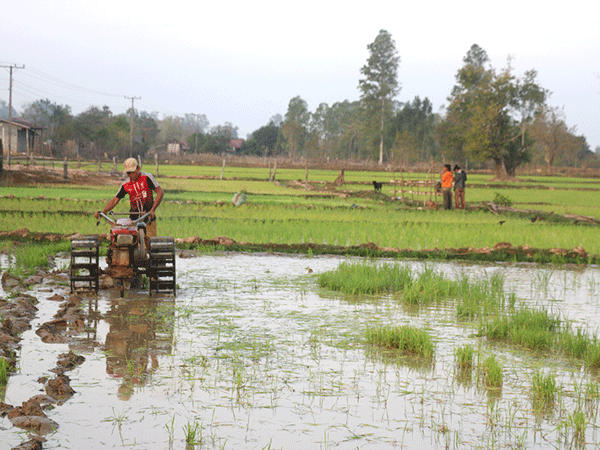 |
| Farmers are severely hampered by steep rises in production costs. |
Laos earns US$870 million from agricultural exports
Laos earned more than US$870 million from the export of agricultural produce over the past six months of this year, equalling 72.57 percent of the target for the whole of 2022, a senior government official has said.
The main farm products exported were bananas, rubber, cassava, sugarcane, cattle and buffaloes, with China being the largest purchaser.
Addressing the National Assembly last week, Minister of Agriculture and Forestry, Dr Phet Phomphiphak, said the government will encourage more domestic and foreign business operators to invest in agriculture, in order to boost exports.
“Japanese companies will invest hundreds of millions of dollars in the rearing of cattle, pigs and chickens in the provinces of Xieng Khuang, Huaphan and Xekong,” he said.
“In addition, several local companies plan to invest in agriculture, to produce food for consumption in Laos and for export, in line with the government’s policy to bolster productivity in this sector.”
Dr Phet praised a successful organic dairy farm in Xieng Khuang province in which Vinamilk, Vietnam’s largest dairy company, has teamed up with Lao and Japanese businesses to invest hundreds of millions of dollars to build a herd of 8,000 cattle.
“This month, the company will bring in 1,000 cattle,” he said.
There are currently more than 2,000 livestock farms in Laos, of which 655 raise cattle, 553 are pig farms, 711 are poultry farms, and the rest raise goats, sheep and other animals.
However, farmers and producers in Laos are severely hampered by steep rises in production costs, mainly due to the spiralling price of fuel.
In addition, the cost of machinery, fertiliser and animal feed has risen sharply because these items are imported and must be paid for in foreign currency, which is costly because of the continuing depreciation of the kip.
“In 2021, producers invested about 8-10 million kip to grow one hectare of rice, but now it costs 12-15 million kip to grow this amount because production costs have increased by about 40-50 percent,” Dr Phet said.
To tackle this problem, the government is promoting the use of organic fertiliser and locally-produced animal feed to cut the cost of imports.
Farmers in Laos need about 2 million tonnes of fertiliser a year but at present only 600,000 tonnes of organic fertiliser can be produced.
In addition, farmers need about 600,000 tonnes of animal feed, but the six manufacturing plants in Laos can supply less than 400,000 tonnes, equal to just 60 percent of demand.
However, Laos has a huge opportunity to boost crop yields for export, particularly to China, with the Laos-China railway now able to transport perishable goods more efficiently and quickly.
The growth of exports can earn more foreign currency for Laos, which would help to stabilise the value of the kip.
In 2021, Laos earned more than US$900 million from the export of agricultural produce, accounting for only 82 percent of the target figure set for that year.
By Somsack Pongkhao
(Latest Update June 20, 2022)
|